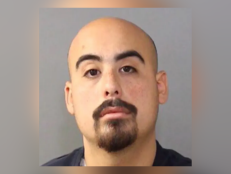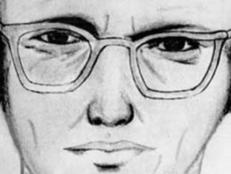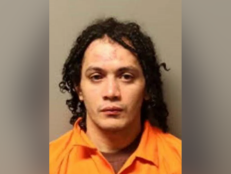Crime History: The Execution of Aileen Wuornos, 'America's First Female Serial Killer'
![Aileen Wuornos, from Aileen Wuornos: The Selling of a Serial Killer (1993) [screenshot]](http://investigationdiscovery.sndimg.com/content/dam/images/investigationdiscovery/crimefeed/legacy/2018/03/20180326_Aileen_Wuornos_crimefeed.png.rend.hgtvcom.616.347.suffix/1537472230905.png)
Aileen Wuornos, from Aileen Wuornos: The Selling of a Serial Killer (1993) [screenshot]
Touted in the popular consciousness as “America’s first female serial killer” — a specious label that nevertheless stuck — Aileen Wuornos died via state-administered lethal injection on October 9, 2002.
Florida State Prison officials executed Wuornos for six of the seven murders she committed between 1989 and 1990. All her victims were men, and Wuornos shot each one point-blank in the face.
The condemned prisoner’s last words mashed up Christian fervor with then-recent Hollywood blockbuster imagery, as Wuornos announced:
“I’d just like to say I’m sailing with the rock, and I’ll be back like Independence Day, with Jesus June 6. Like the movie, big mother ship and all, I’ll be back.”
During her initial defense, Wuornos claimed that she only shot to protect herself, as she was working as a prostitute and these men had either raped her or, during a struggle, died trying.
In 2001, though, Wuornos terminated all pending appeals, writing, “I killed those men, robbed them cold as ice. And I’d do it again… I’m the one who hates human life and I’d kill again.”
Wuornos’s journey through to that declaration reads like a series of abuses and tragedies piled atop mental illness, ultimately igniting a powder keg of homicidal rage. No excuse can be made for murder, of course. Still, it’s difficult not to sympathize with the child that eventually grew up to pull the trigger all those times.
Aileen Wuornos was born in Rochester, Michigan, on February 29, 1956. Her father was in prison at the time, convicted of committing sex crimes against children (he eventually hanged himself in a jail cell in 1969). Wuornos’s mother left Aileen and her older brother with her parents in 1960 and never returned.
From there, Wuornos said she was routinely beaten and raped by her grandfather and, in time, her brother. By age 11, Aileen regularly traded sex to schoolmates for cigarettes, drugs, and even food. A friend of her grandfather impregnated 14-year-old Aileen during a rape. After she put her son up for adoption, Aileen’s grandfather threw her out of the house and she lived in nearby woods. She supported herself through prostitution.
A life of escalating violence, substance abuse, and criminal activity followed. In 1987, Wuornos hooked up with hotel maid Tyria Moore, and the pair moved in together as a couple. Aileen supported them by turning tricks.

Florida Department of Corrections
Aileen Wuornos
Wuornos’s murder spree commenced on November 30, 1989, when she shot 51-year-old Richard Mallory — a convicted rapist — and ended almost exactly one year later, with the killing of Walter Jeno Antonio, 62.
All the bullet-riddled bodies of the men Wuornos killed turned up, usually along a roadside or nearby, except one. The remains of Peter Siems, 65, have never been located. It was Siems’s car, interestingly, that led to the capture and conviction of Wuornos.
Eyewitnesses spotted Wuornos and Moore abandoning the vehicle in Orange Springs, Florida. Wuornos’s palm print turned up on a door handle, leading to a match of her fingerprints on the other victims.
Authorities arrested Wuornos at The Last Resort, a Florida biker bar on January 9, 1991. She had split up with Moore by then, but police quickly located her former lover in Scranton, Pennsylvania, and cut her an immunity deal to get Wuornos to confess on tape. Moore later testified against her ex-lover in court.
Defense psychiatrists at Wuornos’s trial testified she had been diagnosed with borderline personality disorder and antisocial personality disorder. Regardless, the court sentenced Wuornos to death for the initial murder of Richard Mallory, after which she said she wanted to “get right with God” and confessed to the other killings. Three more death sentences followed, ultimately resulting in a total of six.
After requesting just a cup of black coffee for her final meal, Florida put Aileen Wuornos to death. She was the second woman in the state and the tenth in the country overall to be executed since the Supreme Court reinstated capital punishment in 1976.
In her death, Aileen Wuornos became a media sensation and even something of a “countercultural icon.”
Documentarian Nick Broomfield turned his jailhouse interviews with her into two acclaimed nonfiction films, Aileen Wuornos: The Selling of a Serial Killer (1993) and Aileen: Life and Death of a Serial Killer (2003). More popularly, Charlize Theron won a Best Actress Academy Award for her portrayal of Wuornos in the acclaimed drama, Monster (2003).
On TV, Jean Smart played Wuornos in the film Overkill: The Aileen Wuornos Story (1992) and Lily Rabe tackled the character in 2015 on American Horror Story: Hotel.
More esoteric takes followed in the form of Wuoronos, an opera performed at the Yerba Center for the Arts in San Francisco, and “Iron Lady,” a musical tribute by avant-garde singer Diamanda Galas.
In 2013, the New York Daily News reported that The Last Resort, the bar where police picked up Wuornos, remained a tourist attraction, even boasting a mural of the killer on its wall.
Behind it all is a horrific life story that ended with the taking of other lives. Aileen Wuornos never knew peace while she lived — and killed — among us. Then, with every June 6 that has come and gone since her execution, she hasn’t come back like she said she would, either. For that, it’s difficult to blame her.
To learn more about Aileen Wuornos, watch Aileen Wuornos: Mind of a Monster on ID GO now!
Watch Now:









